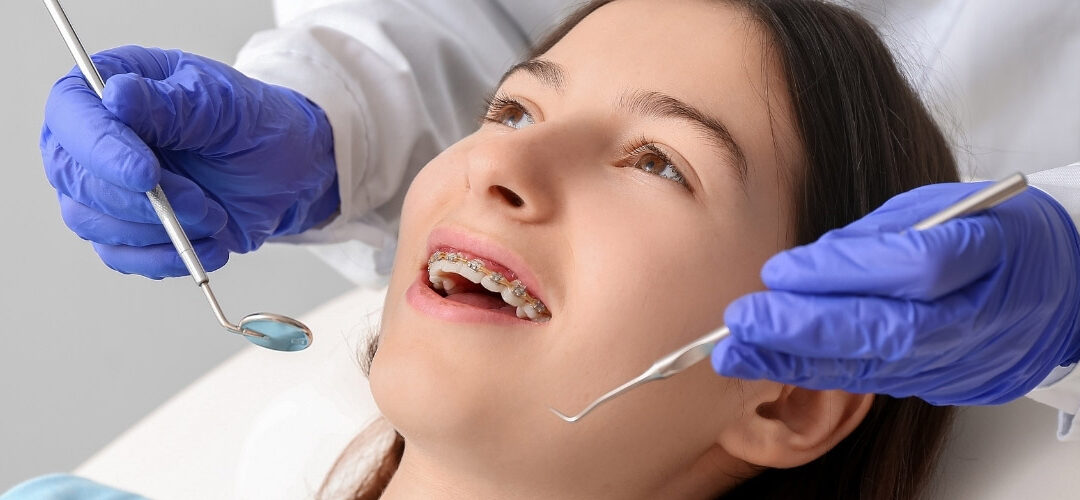Your Overview to Cumming Invisalign: Straightening Teeth with Style and Convenience
Your Overview to Cumming Invisalign: Straightening Teeth with Style and Convenience
Blog Article
Comprehensive Guide to Orthodontics Procedures for Remedying Dental Misalignments
In the realm of orthodontics, the journey to attaining a completely straightened smile involves a myriad of procedures customized to deal with dental imbalances. From conventional dental braces to invisible aligners and also surgical alternatives, the area of orthodontics supplies a series of services to resolve varying degrees of oral abnormalities. Comprehending the intricacies of each treatment, including their systems, benefits, and possible drawbacks, is important in making informed decisions regarding one's orthodontic therapy. As we browse through the extensive guide to orthodontic treatments for dealing with oral imbalances, the intricate details of each method will certainly unfold, clarifying the course towards a useful and harmonious dental alignment.
Orthodontic Procedures Overview

Routine adjustments and monitoring are essential parts of orthodontic treatment to make sure development is on track and to make any necessary modifications along the means. By going through orthodontic procedures, people can not just attain a straighter smile but likewise boost their general oral wellness and feature.
Conventional Dental Braces: Exactly How They Function
When considering orthodontic therapies for oral misalignments, conventional braces stand out as a time-tested technique for remedying teeth positioning. Typical dental braces consist of braces, wires, and bands that work with each other to apply continuous stress on the teeth, slowly moving them right into the wanted alignment.
One trick aspect of just how typical braces job is the procedure of bone renovation. As pressure is applied to the teeth via the braces, the bone bordering the teeth is reshaped to support the brand-new tooth settings. This improvement is essential for the lasting stability of the dealt with placement. Individuals will require normal modifications at the orthodontist's office to guarantee the dental braces proceed to apply the right stress for effective teeth movement.
Undetectable Aligners: Disadvantages and pros
Undetectable aligners offer a hassle-free and very discreet choice to typical braces for fixing dental imbalances. These clear, customized trays are practically invisible when put on, making them an enticing choice for individuals looking for an extra aesthetically pleasing orthodontic therapy. Among the primary advantages of unnoticeable aligners is their removability, enabling simpler maintenance of dental health contrasted to conventional braces. Patients can remove the aligners before consuming or brushing their teeth, decreasing the threat of food obtaining stuck in the device and simplifying the cleaning process.

Surgical Orthodontic Options
Surgical treatments in orthodontics present feasible options for attending to complex dental misalignments that might not be successfully dealt with through traditional orthodontic treatments. While typical dental braces and invisible aligners can deal with several orthodontic concerns, certain situations need surgical intervention to accomplish optimum results. Surgical orthodontic options are normally suggested for extreme malocclusions, significant jaw disparities, and situations where the underlying bone framework requires adjustment to accomplish appropriate placement.
One typical surgical orthodontic procedure is orthognathic surgical treatment, which includes repositioning the jaws to deal with useful issues such as difficulty chewing or talking. This surgery is often performed in cooperation with an orthodontist who assists straighten the teeth prior to and after the treatment. Surgical orthodontics may also entail treatments to reveal influenced teeth, eliminate excess periodontal tissue, or reshape the jawbone to develop a much more unified face account.
Prior to taking into consideration surgical orthodontic alternatives, people undertake a thorough examination to establish the necessity and prospective benefits of such interventions. orthodontist. While surgery might seem challenging, it can significantly enhance both the feature and appearances of the smile in situations where conventional orthodontic therapies over here fail
Retainers and Post-Treatment Treatment

Post-treatment care involves complying with the orthodontist's directions faithfully. This might include proper oral hygiene methods, going to follow-up consultations, and wearing the retainers as prescribed. Failure to follow post-treatment treatment guidelines can cause relapse, where the teeth gradually move back towards their original settings. Regular retainer this wear, good oral health, and normal oral check-ups are necessary for maintaining the results attained with orthodontic surgery and guaranteeing the long-term security of the fixed oral placement.
Final Thought
In verdict, orthodontic treatments provide different choices for remedying oral misalignments. Traditional dental braces make use of steel braces and cables to move teeth into proper alignment. Invisible aligners give an even more very discreet option however might not appropriate for all instances. Surgical orthodontic options are available for much more severe imbalances. Retainers are commonly made use of post-treatment to keep the new placement. In general, orthodontic treatments can efficiently enhance oral wellness and visual look.
As we browse through the thorough guide to orthodontic procedures for fixing dental misalignments, the complex information of each method will unfold, dropping light on the course towards a harmonious and functional oral alignment. - cumming orthodontist
One of the most usual orthodontic treatments is the use of braces, which are composed of steel brackets and cables that use mild stress to slowly change teeth into the wanted position.When taking into consideration orthodontic treatments for dental misalignments, typical dental braces stand out as a time-tested method for dealing with teeth positioning. In addition, dental discount undetectable aligners may not be appropriate for complex orthodontic concerns that require more considerable teeth movement, as they are typically recommended for mild to moderate cases. Retainers are tailor-made orthodontic tools designed to hold teeth in their remedied placements after the conclusion of orthodontic treatment.
Report this page